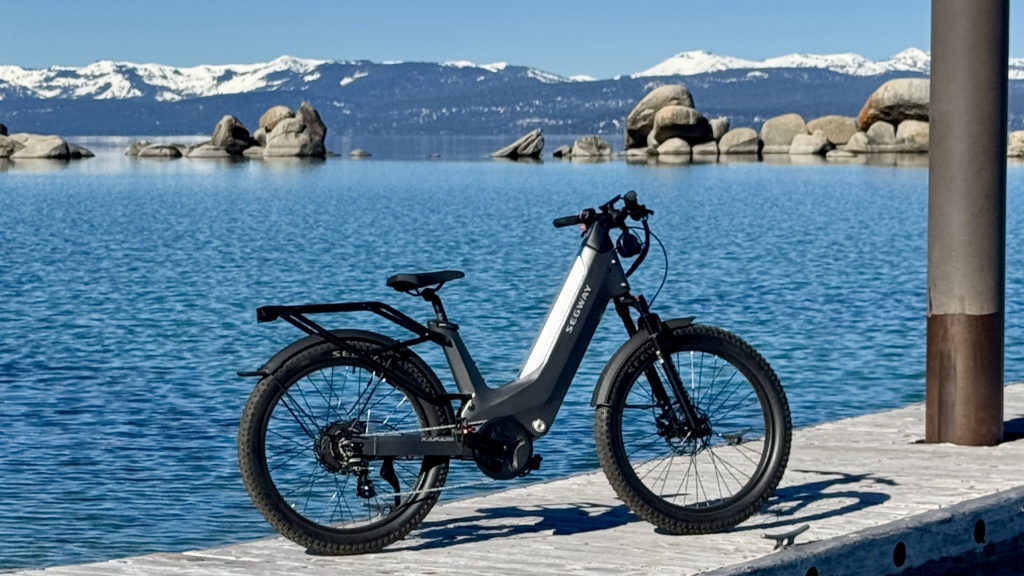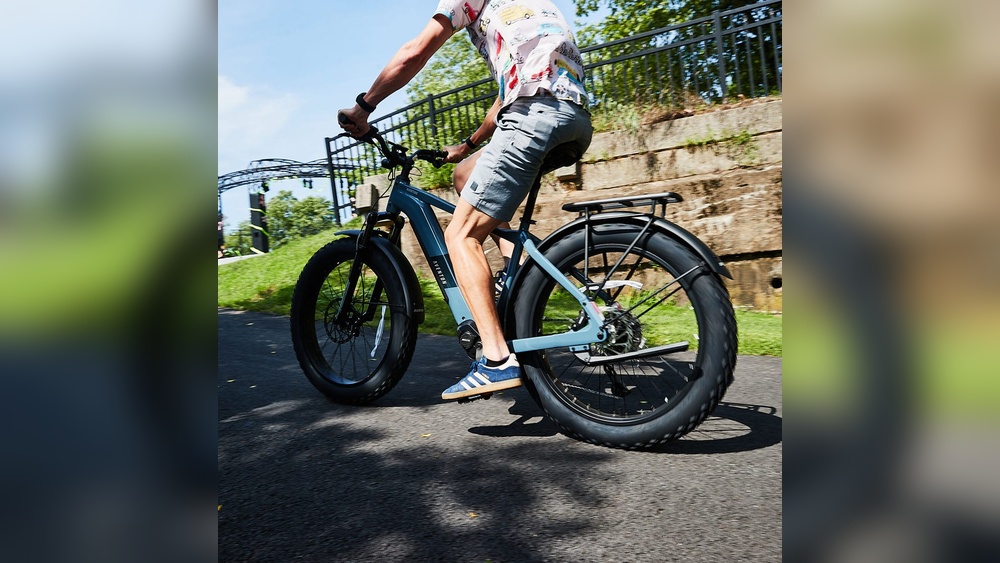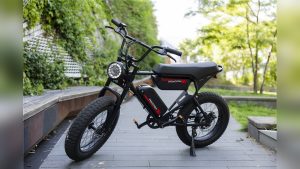Are you curious about e-bike bicycling but don’t know where to start? You’re not alone.
E-bikes are changing the way people ride, making cycling easier and more fun. Whether you want to enjoy longer rides, tackle hills without breaking a sweat, or simply get around town faster, this guide is made for you. Keep reading to discover everything you need to know to get started with e-bike bicycling and enjoy your rides like never before.
Your new adventure is just a few pedals away!

Credit: www.outdoorgearlab.com
Choosing The Right E-bike
Choosing the right e-bike is the first step for beginners. The perfect e-bike matches your needs and riding style. Picking the right one makes your rides fun and safe. This guide helps you understand what to look for in an e-bike.
Types Of E-bikes
E-bikes come in various types. Commuter e-bikes are great for city rides. Mountain e-bikes handle rough trails well. Folding e-bikes fit small spaces easily. Cruiser e-bikes offer a relaxed ride. Choose a type that fits your usual path.
Motor And Battery Basics
The motor powers the e-bike and helps you pedal. Hub motors sit in the wheel, often in front or rear. Mid-drive motors are near the pedals and feel natural. Battery size affects how far you can ride. Bigger batteries last longer but add weight. Check motor power and battery life before buying.
Key Features To Consider
Look for a comfortable seat and adjustable handlebars. Good brakes ensure safety on all roads. Suspension helps smooth bumpy rides. Check the bike’s weight, especially if you carry it. Easy-to-use controls make riding simpler. Some e-bikes have helpful displays for speed and battery info.
Budgeting Your Purchase
E-bikes vary in price from affordable to expensive. Set a budget before shopping. Cheaper bikes may lack some features or have smaller batteries. Higher-priced models often last longer and ride better. Consider long-term costs like maintenance and battery replacement. Find a bike that fits your budget and needs.

Credit: electroheads.com
Essential Gear And Accessories
Starting with an e-bike is exciting. Having the right gear makes rides safe and fun. It also keeps your bike in good shape. Some gear protects you. Other gear helps you stay comfortable. Tools help fix small issues fast. Here is a list of must-have gear for beginners.
Safety Equipment
Safety gear protects you on the road. A good helmet reduces head injuries. Bright lights help others see you. Reflective clothing adds extra visibility. Gloves protect your hands from falls. A bell or horn warns people nearby. Choose gear that fits well and feels good.
Comfort Enhancements
Comfort gear makes rides longer and more enjoyable. Padded bike shorts reduce seat soreness. A cushioned seat or cover adds comfort. Handlebar grips help reduce hand fatigue. A water bottle holder keeps drinks handy. Dress in layers for changing weather. Small changes improve your ride a lot.
Maintenance Tools
Basic tools keep your e-bike running smoothly. A pump fixes flat tires fast. Tire levers help remove tires easily. A multi-tool offers many functions in one. Carry a spare tube for emergencies. Regular checks prevent bigger problems later. Learning small repairs saves time and money.
Basic Riding Techniques
Learning the basic riding techniques is important for every beginner on an e-bike. These skills help you feel safe and confident. They make riding easier and more fun. Understanding how to start, stop, balance, steer, and use pedal assist will improve your experience.
Starting And Stopping Safely
Always start by placing one foot on the ground. Press the pedal gently with the other foot. Use the throttle or pedal assist to move forward slowly. To stop, press the brakes smoothly. Avoid sudden stops to keep control. Practice in a safe, open area before riding on roads.
Balancing And Steering
Keep your body relaxed but steady. Look ahead, not down at the wheels. Use your arms to steer the handlebars gently. Lean slightly into turns for better balance. Practice slow turns and straight paths. This builds your confidence and control over the e-bike.
Using Pedal Assist Modes
Pedal assist helps you pedal with less effort. Start with the lowest mode to get used to it. Increase the assist as you feel comfortable. Each mode changes how much the motor helps you. Use higher assist on hills or long rides. Lower assist saves battery and gives more exercise.
Safety Tips For Beginners
Safety is very important for new e-bike riders. Knowing how to stay safe helps you enjoy your rides more. Follow these tips to protect yourself on the road and avoid accidents. Start with the right gear and learn how to ride smart in traffic. Also, take extra care when riding at night. These simple steps make your rides safe and fun.
Helmet And Protective Wear
Always wear a helmet. It protects your head in case of falls. Choose a helmet that fits well and meets safety standards. Wear gloves to protect your hands from scrapes. Use knee and elbow pads for extra safety. Bright clothing helps others see you. Safety gear is the first step to a safe ride.
Navigating Traffic
Stay alert and watch for cars and pedestrians. Use hand signals to show your turns. Ride on the right side of the road. Follow traffic lights and signs carefully. Avoid sudden moves or weaving between cars. Keep a safe distance from other vehicles. Riding predictably helps drivers see you and avoid accidents.
Night Riding Precautions
Use front and rear lights on your e-bike. Wear reflective clothing or accessories. Ride on well-lit streets only. Reduce your speed to react quickly. Avoid dark or isolated areas. Stay extra alert for obstacles and road hazards. These steps keep you visible and safe after dark.
Maintenance And Care
Proper maintenance keeps your e-bike running smoothly and safely. Caring for your bike helps avoid costly repairs. It also makes your ride more enjoyable every time. Simple steps can extend the life of your e-bike.
Battery Charging And Storage
Charge the battery regularly, even if you do not ride. Avoid letting the battery drain completely. Store the battery in a cool, dry place. Extreme heat or cold can damage the battery. Remove the battery from the bike for long storage periods.
Tire And Brake Checks
Check tire pressure before each ride. Proper pressure ensures better control and reduces flats. Inspect tires for cuts or worn spots. Test brakes often; they must stop the bike quickly. Replace brake pads if they look thin or worn.
Cleaning Your E-bike
Clean your e-bike after rides, especially in dirt or rain. Use a soft cloth and mild soap. Avoid high-pressure water, which can harm electrical parts. Dry the bike completely to prevent rust. Clean chain and gears regularly to keep them smooth.
Planning Your Rides
Planning your rides helps you enjoy e-bike bicycling safely and comfortably. It makes your trips fun and stress-free. Good planning saves time and avoids problems on the road.
Choosing Safe Routes
Pick routes with bike lanes or paths. Avoid busy streets and highways. Look for flat roads if you are a beginner. Parks and quiet neighborhoods offer safe places to ride. Check for road conditions and traffic before you start.
Weather Considerations
Check the weather forecast before your ride. Avoid strong winds, heavy rain, or extreme heat. Dress in layers to stay comfortable. Carry water to stay hydrated. Plan shorter rides on very hot or cold days.
Setting Realistic Goals
Start with short rides and easy routes. Increase your distance and time slowly. Listen to your body and rest when needed. Set clear goals like riding for 30 minutes. Celebrate small progress to stay motivated.
Troubleshooting Common Issues
Troubleshooting common issues on an e-bike helps keep it running smoothly. Beginners may face some problems but most are easy to fix. Knowing what to check saves time and stress. Start with the basics, then move to more detailed checks.
Motor Problems
The motor is the heart of your e-bike. If it does not start, check the power switch first. Make sure the motor wires are connected well. Look for any visible damage or loose parts. Sometimes dirt or water causes the motor to stop working. Clean it gently and dry it if needed.
Listen for unusual noises from the motor. Grinding or clicking sounds may mean internal damage. In this case, professional help is needed. Avoid forcing the motor to work, as it can cause more damage.
Battery Concerns
The battery provides power to your e-bike. Check if the battery is fully charged before riding. A low battery can cause poor motor performance. Inspect the battery for cracks or leaks. Never use a damaged battery as it is unsafe.
Ensure the battery fits tightly in its holder. Loose connections can stop power flow. If the battery drains quickly, it might need replacement. Store the battery in a cool, dry place to extend its life.
Electrical System Checks
The electrical system links the motor, battery, and controls. Start by checking all cables for cuts or breaks. Use a soft cloth to clean connectors and remove dirt. Loose connectors can cause power loss or sudden stops.
Test the control panel and throttle for responsiveness. Unresponsive controls might need resetting or repair. Avoid water exposure to electrical parts. Keep your e-bike dry and clean to prevent electrical issues.

Credit: www.rei.com
Frequently Asked Questions
What Is An E-bike And How Does It Work?
An e-bike is a bicycle with an electric motor to assist pedaling. It uses a rechargeable battery to provide power, making cycling easier and faster, especially uphill or against wind.
Are E-bikes Suitable For Beginners?
Yes, e-bikes are ideal for beginners. They offer pedal assistance, reducing physical effort. This helps new riders build confidence and enjoy longer rides without exhaustion.
How Long Does An E-bike Battery Last?
E-bike batteries typically last 20 to 50 miles per charge. Battery life depends on terrain, rider weight, and assist level used. Charging time usually takes 3 to 6 hours.
Do I Need A Special License To Ride An E-bike?
In most places, no special license is required for standard e-bikes. However, regulations vary by location. Check local laws to confirm e-bike classification and licensing requirements.
Conclusion
E-bike bicycling opens fun and easy ways to explore outdoors. Beginners can enjoy rides without much effort or strain. Start slow, learn the controls, and feel the boost. Safety gear and rules keep every trip safe and smooth. Riding often builds confidence and helps improve skills fast.
E-bikes suit many ages and fitness levels well. Give yourself time to adapt and enjoy the journey. E-bike riding brings fresh air and good exercise together. It’s a great way to move and enjoy nature’s beauty. Try it today and see where your wheels take you!



